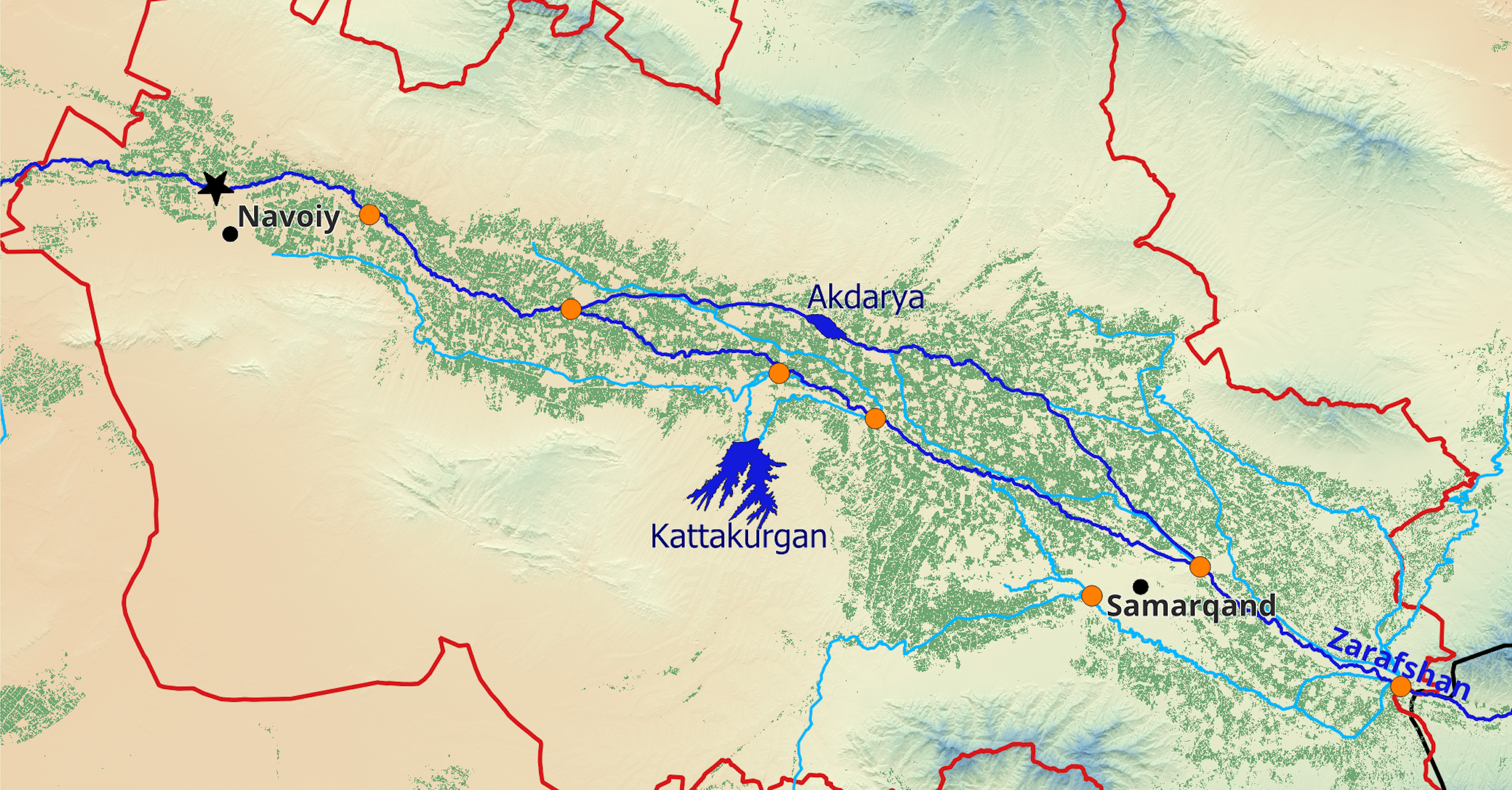The Future of Water in Central Asia
Our new scientific study, "Unveiling the Future Water Pulse of Central Asia: A Comprehensive 21st Century Hydrological Forecast from Stochastic Water Balance Modeling", sheds light on projected climatic changes in Central Asia and offers insights into the future availability and management of water resources in this critical region.
high-mountain basins with 21st-century climate projections
climate scenario and model combinations studied
upper limit of mean temperature increase in mountains until the end of the 21st century
upper limit of mean precipitation increase in mountains relative to baseline
The Importance of Central Asia’s Water Resources
Climate change is one of the most pressing global challenges, with significant implications for water resources, particularly in vulnerable regions like Central Asia (Figure 1). This area, characterised by its arid climate and reliance on seasonal runoff from high-mountain regions, faces an uncertain future as global temperatures rise and precipitation patterns shift.
Central Asia, including Afghanistan,Kazakhstan, Kyrgyzstan, Uzbekistan, Tajikistan, and Turkmenistan, depends heavily on renewable water from high-mountain catchments. These water sources are crucial for agriculture, drinking water, industry, and ecosystem health.The region’s water is primarily derived from snow melt and, to a much lesser extent, glacier melt. The melt and runoff from rainfall feed into large transboundary rivers like the Amu Darya and Syr Darya.
However, this dependency on meltwater makes the region particularly susceptible to the impacts of climate change. As global temperatures increase, the snow accumulation and melt area decreases, and glaciers retreat. Precipitation patterns become more erratic, and the timing and quantity of water flow are expected to change, posing risks to water security and regional stability.
A New Approach to Hydrological Forecasting
Our new scientific study, published in the Journal Climatic Change, employs a comprehensive hydrological model to address the knowledge gaps surrounding future water availability in Central Asia. We used a stochastic soil moisture water balance model to project changes in runoff and evaporation across 221 high-mountain catchments. This model was calibrated with historical climate data from 1979 to 2011. Future projections from four General Circulation Models (GCMs) under various climate scenarios (SSP1-2.6, SSP2-4.5, SSP3-7.0, SSP5-8.5) are studied to project changes.
The study also integrated modeled future glacier ablation data to refine discharge modeling, providing a more accurate prediction of future water availability in these critical regions. This approach allowed us to assess the impacts of climate change at a much more granular level than previous studies, which often focused on larger river basins rather than individual subcatchments in the region.

Key Findings: Diverse Hydrological Responses AcrossCentral Asia
The study’s projections reveal a complex and varied response to climate change across Central Asia’s high-mountain regions. Here are some of the key findings:
1. Temperature and Precipitation Changes: By the end of the 21st century, median temperatures inthe region are projected to rise by 1.9 °C to 5.6 °C, depending on the climate scenario. Precipitation is also expected to increase, with median increases ranging from 5.5 % to 10.1 %. However, these changes are not uniform across the region, leading to varied impacts on water resources.

2. Runoff and Evaporation: The study predicts that actual evaporation will increase by 7.3 % to 17.4 %, while changes in discharge, i.e., the amount of water flowing out of the catchments, will vary significantly. For example, under the SSP5-8.5 scenario, discharge is expected to increase by 3.8 % and 5.0 % in the first and second future periods but then decrease by 2.7 % by the end of the century.
3. GlacierMelt and Discharge: Glacier melt will be critical in shaping future water availability. The study anticipates significant glacier wastage in lower-lying areas, reducing discharge in some parts of the Tien Shan mountains, including the Naryn catchment, over the long run past the peak glacier melt period.Conversely, higher-elevation areas in the Gissar-Alay and Pamir mountains will experience increased discharge due to enhanced glacier ablation over a much longer duration over the entire 21st century.
4. Changing Hydroclimate Risk: The study also highlights potential shifts in precipitation patterns, suggesting that future rainfall may become more intense but less frequent. This change could lead to more extreme weather events, such as floods and droughts, altering the hydroclimate risk landscape and posing new challenges for water management.

Implications for Future Water Management
The findings of our study have significant implications for water management in Central Asia. As the region faces a future with more variable and potentially less reliable water resources, it must adaptits water management strategies to cope with these changes. This includes considering the construction of new reservoirs to store water during wetter periods and provide a buffer during dry spells.
Additionally, the study suggests that aone-size-fits-all approach to water management will not be effective in CentralAsia. Instead, strategies must be tailored to each catchment's specific conditions, considering each area's unique combination of climate, topography, and glaciation.
By offering a more detailed and nuanced picture of how climate change will impact water resources across Central Asia’s high-mountain catchments, our study equips policymakers, water managers, and other relevant local stakeholders with the information they need to make informed decisions. As the region navigates the challenges of the 21st century, such insights will be invaluable in ensuring that water resources are managed sustainably and equitably for future generations.
While this study represents a significant step forward in our understanding of Central Asia’s water future, much work still needs to be done. Future research should focus on improving the accuracy of hydrological models, particularly in terms of glacier melt and snow dynamics. Additionally, more attention should be paid to the potential for extreme weather events, such as floods and prolonged droughts, which could have devastating impacts on the region’s water security.
Ultimately, ensuring the sustainability ofCentral Asia’s water resources in the face of climate change will require a concerted effort from governments, also at transboundary levels. By working together and leveraging the latest scientific insights, the region can develop the resilience needed to thrive.
More Projects






